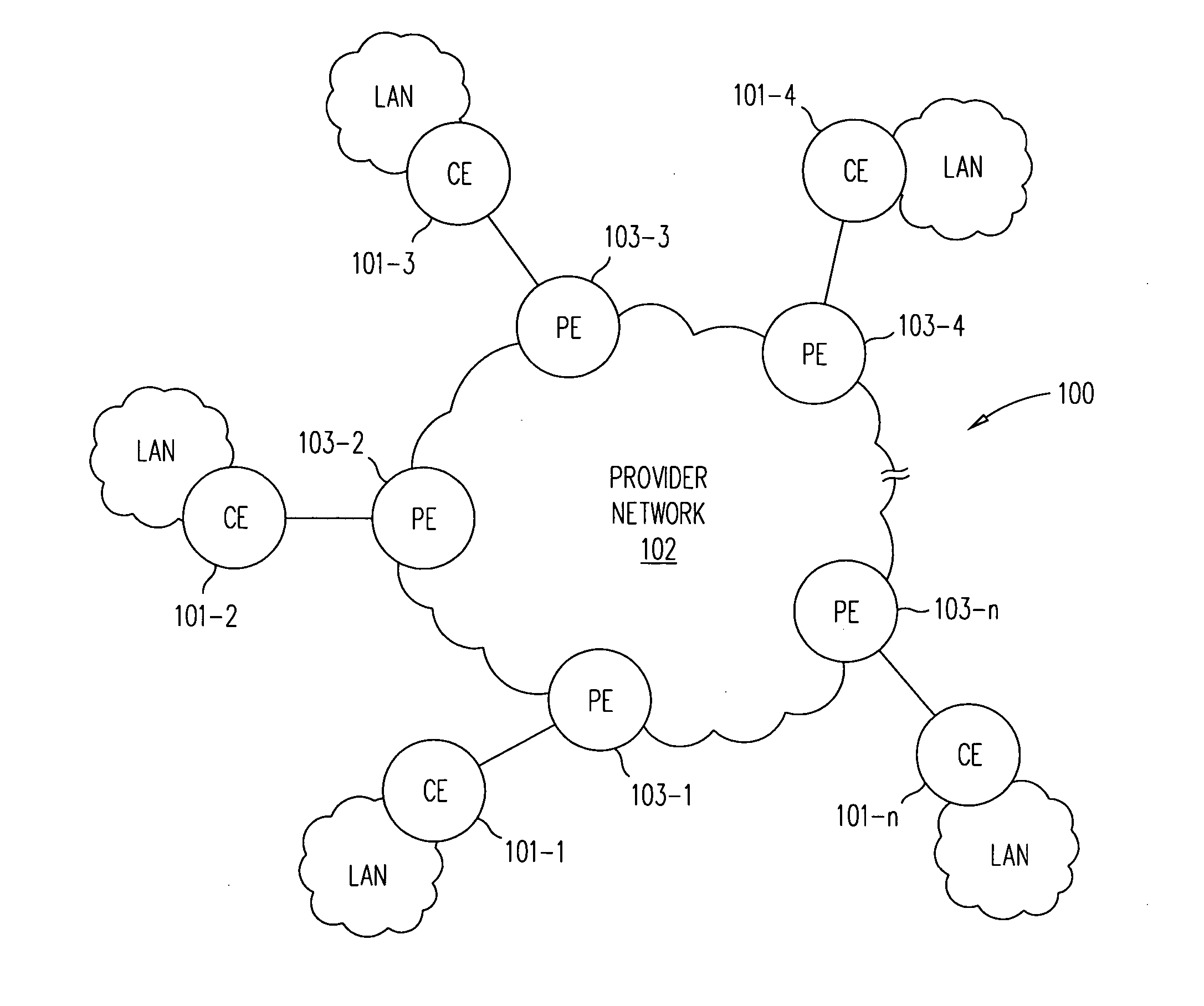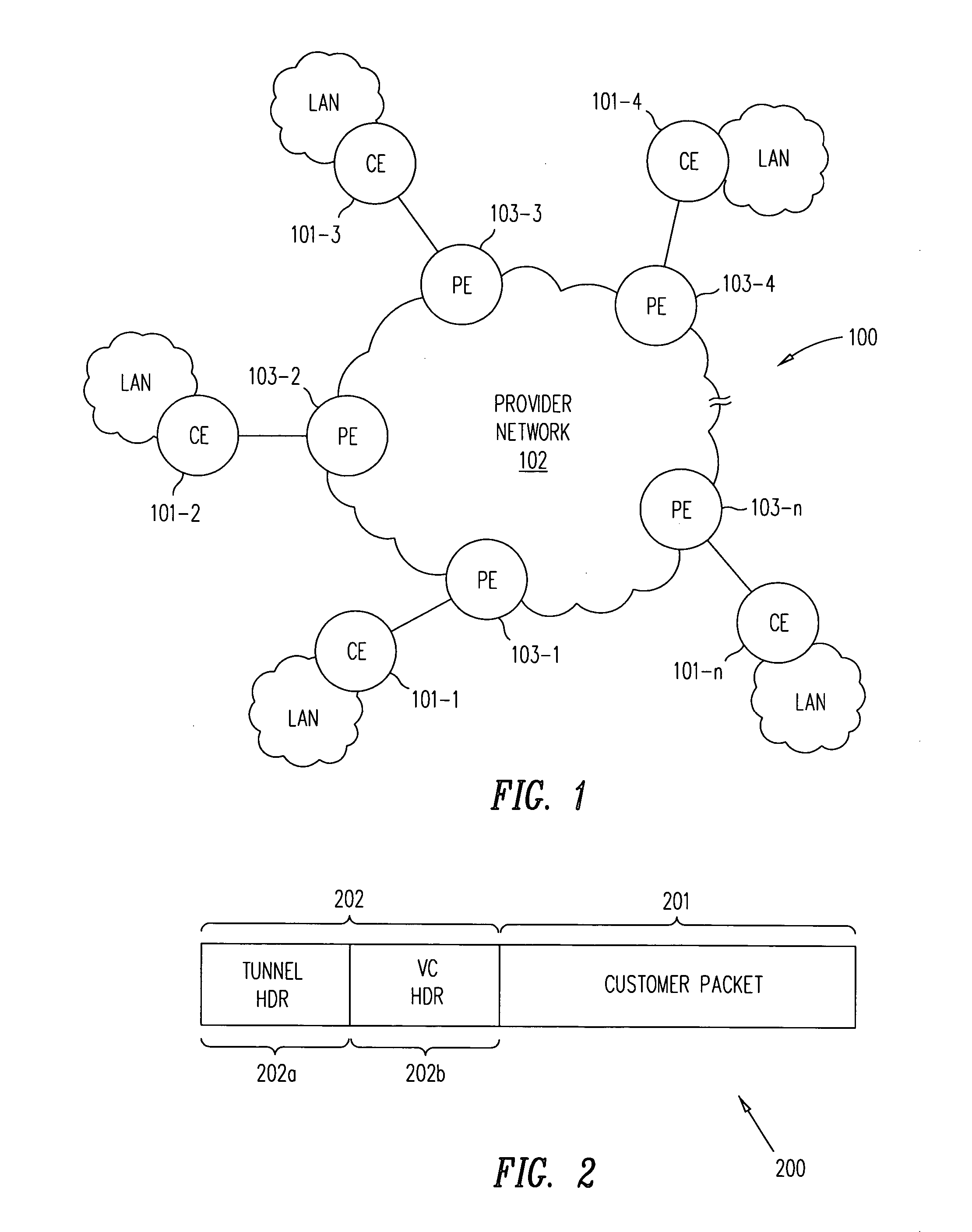Method for providing scalable multicast service in a virtual private LAN service
- Summary
- Abstract
- Description
- Claims
- Application Information
AI Technical Summary
Benefits of technology
Problems solved by technology
Method used
Image
Examples
Embodiment Construction
[0020] One possible solution to the headend replication problem would be to have the PE device receiving a customer multicast packet, or an unknown unicast packet, from an associated CE device to forward the MPLS encapsulated customer packet to its adjacent peer PE device or devices. (For the purpose of this detailed description and the appended claims, the term “multicast” encompasses also broadcast.) Each PE device receiving a forwarded encapsulated packet, need only provide the packet to its associated CE device or devices, and forward the encapsulated packet to its adjacent peer PE device or devices. This process repeats until all PE devices are reached. This solution, however, requires modifications to the existing proposed VPLS standards, for which there are at least two reasons. First, there is currently no standard-based MPLS method for multicasting MPLS-labeled packets. Second, at least one proposed VPLS standard forbids forwarding VPLS packets amongst peer PE devices to pr...
PUM
 Login to View More
Login to View More Abstract
Description
Claims
Application Information
 Login to View More
Login to View More - R&D
- Intellectual Property
- Life Sciences
- Materials
- Tech Scout
- Unparalleled Data Quality
- Higher Quality Content
- 60% Fewer Hallucinations
Browse by: Latest US Patents, China's latest patents, Technical Efficacy Thesaurus, Application Domain, Technology Topic, Popular Technical Reports.
© 2025 PatSnap. All rights reserved.Legal|Privacy policy|Modern Slavery Act Transparency Statement|Sitemap|About US| Contact US: help@patsnap.com



